An infection with the dangerous .Asasin Virus leads to serious security issues. Victims can restore and protect their computers by following our complete removal guide.
Remove .Asasin Virus and Restore PC
Manual Removal Guide
Skip all steps and download anti-malware tool that will safely scan and clean your PC.
SpyHunter anti-malware tool will diagnose all current threats on the computer. By purchasing the full version, you will be able to remove all malware threats instantly. Additional information about SpyHunter / Help to uninstall SpyHunter
Distribution of .Asasin Virus
.Asasin Virus is a new iteration of the Locky ransomware family which is delivered mainly via e-mail spam messages. Popular social engineering tactics are used which blackmail the victims into infecting themselves. There are several main types of strategies that are used by the criminals:
- Sending the .Asasin Virus Files Directly ‒ The hackers send the e-mail messages and attach the strains directly to them. The infection occurs as soon as the file is downloaded and executed on the local computer.
- Body Hyperlinks ‒ Virus samples can be hosted on various hacker-controlled sites and linked in the emails as important sites. Notable social engineering strategies disguise the links as topics of interest to the victims.
- Payload Carriers ‒ Email spam messages propagate payloads of different types that lead to succesful infections.
Some of the typical cases where payload carriers are used include software installers or
The infected documents can be of different formats ‒ rich text documents, spreadsheets or databases. The infected installers on the other hand are legitimate applications that have been downloaded from their official sources and modified to include the dangerous .Asasin virus samples.
Various download portals, web ads and redirect scripts can point the users to the malware instances. Bear in mind that the security researchers that track the infections noticed that the bulk of the current attack wave use archives or PDF files as well.
Impact of .Asasin Virus
Once the .Asasin Virus has infected the target system it immediately starts to execute its built-in sequence of commands. As the threat is part of the Locky ransomware family the security researchers note that it can easily be modified by the hacker operators. At the moment the identity of the hacker or the criminal collective is not known. Depending on the particular attack campaign it can include different modules.
As the .Asasin virus samples can be customized according to the targets the sequence can vary. Some of the following components are typical for the Locky ransomware family, it is presumed that they are available and executed on the victim machines.
- Windows Registry Changes ‒ The malware has the ability to modify essential Windows Registry values which can lead to performance issues and application faults.
- Persistent Installation ‒ Using this feature the .Asasin virus can infect the computer on a deep level and actively defend itself against manual removal attempts. Only the use of a quality anti-spyware tool can effectively remove the virus and restore the computer.
- Information Harvesting ‒ .Asasin virus can extract important data about the system hardware components, software configuration and user data.
Once all dangerous actions have been initiated the ransomware process is started according to a predefined list of file type extensions. They are usually the most popular files used by the users: archives, documents, books, music, photos, videos, backups and etc. Previous versions of the Locky ransomware family were known to encrypt user files according to this file list:
.001, .002, .003, .004, .005, .006, .007, .008, .009, .010, .011, .123, .1cd, .3dm, .3ds, .3fr, .3g2, .3gp, .3pr, .602,
.7z, .7zip, .ARC, .CSV, .DOC, .DOT, .MYD, .MYI, .NEF, .PAQ, .PPT, .RTF, .SQLITE3, .SQLITEDB, .XLS, .aac, .ab4, .accdb, .accde,
.accdr, .accdt, .ach, .acr, .act, .adb, .adp, .ads, .aes, .agdl, .ai, .aiff, .ait, .al, .aoi, .apj, .apk, .arw, .asc, .asf, .asm,
.asp, .aspx, .asset, .asx, .avi, .awg, .back, .backup, .backupdb, .bak, .bank, .bat, .bay, .bdb, .bgt, .bik, .bin, .bkp, .blend,
.bmp, .bpw, .brd, .bsa, .cdf, .cdr, .cdr3, .cdr4, .cdr5, .cdr6, .cdrw, .cdx, .ce1, .ce2, .cer, .cfg, .cgm, .cib, .class, .cls, .cmd,
.cmt, .config, .contact, .cpi, .cpp, .cr2, .craw, .crt, .crw, .cs, .csh, .csl, .csr, .css, .csv, .d3dbsp, .dac, .das, .dat, .db, .db3,
.db_journal, .dbf, .dbx, .dc2, .dch, .dcr, .dcs, .ddd, .ddoc, .ddrw, .dds, .der, .des, .design, .dgc, .dif, .dip, .dit, .djv, .djvu, .dng,
.doc, .docb, .docm, .docx, .dot, .dotm, .dotx, .drf, .drw, .dtd, .dwg, .dxb, .dxf, .dxg, .edb, .eml, .eps, .erbsql, .erf, .exf, .fdb, .ffd,
.fff, .fh, .fhd, .fla, .flac, .flf, .flv, .flvv, .forge, .fpx, .frm, .fxg, .gif, .gpg, .gray, .grey, .groups, .gry, .gz, .hbk, .hdd, .hpp,
.html, .hwp, .ibank, .ibd, .ibz, .idx, .iif, .iiq, .incpas, .indd, .iwi, .jar, .java, .jnt, .jpe, .jpeg, .jpg, .js, .kc2, .kdbx, .kdc, .key,
.kpdx, .kwm, .laccdb, .lay, .lay6, .lbf, .ldf, .lit, .litemod, .litesql, .log, .ltx, .lua, .m2ts, .m3u, .m4a, .m4p, .m4u, .m4v, .mapimail,
.max, .mbx, .md, .mdb, .mdc, .mdf, .mef, .mfw, .mid, .mkv, .mlb, .mml, .mmw, .mny, .moneywell, .mos, .mov, .mp3, .mp4, .mpeg, .mpg, .mrw,
.ms11, .msg, .myd, .n64, .nd, .ndd, .ndf, .nef, .nk2, .nop, .nrw, .ns2, .ns3, .ns4, .nsd, .nsf, .nsg, .nsh, .nvram, .nwb, .nx2, .nxl, .nyf,
.oab, .obj, .odb, .odc, .odf, .odg, .odm, .odp, .ods, .odt, .ogg, .oil, .onetoc2, .orf, .ost, .otg, .oth, .otp, .ots, .ott, .p12, .p7b, .p7c,
.pab, .pages, .pas, .pat, .pcd, .pct, .pdb, .pdd, .pdf, .pef, .pem, .pfx, .php, .pif, .pl, .plc, .plus_muhd, .png, .pot, .potm, .potx, .ppam,
.pps, .ppsm, .ppsx, .ppt, .pptm, .pptx, .prf, .ps, .psafe3, .psd, .pspimage, .pst, .ptx, .pwm, .py, .qba, .qbb, .qbm, .qbr, .qbw, .qbx, .qby,
.qcow, .qcow2, .qed, .r3d, .raf, .rar, .rat, .raw, .rb, .rdb, .re4, .rm, .rtf, .rvt, .rw2, .rwl, .rwz, .s3db, .safe, .sas7bdat, .sav, .save,
.say, .sch, .sd0, .sda, .sdf, .sh, .sldm, .sldx, .slk, .sql, .sqlite, .sqlite3, .sqlitedb, .sr2, .srf, .srt, .srw, .st4, .st5, .st6, .st7, .st8, .
stc, .std, .sti, .stm, .stw, .stx, .svg, .swf, .sxc, .sxd, .sxg, .sxi, .sxm, .sxw, .tar, .tar.bz2, .tbk, .tex, .tga, .tgz, .thm, .tif, .tiff, .tlg,
.txt, .uop, .uot, .upk, .vb, .vbox, .vbs, .vdi, .vhd, .vhdx, .vmdk, .vmsd, .vmx, .vmxf, .vob, .wab, .wad, .wallet, .wav, .wb2, .wk1, .wks, .wma, .wmv,
.wpd, .wps, .x11, .x3f, .xis, .xla, .xlam, .xlc, .xlk, .xlm, .xlr, .xls, .xlsb, .xlsm, .xlsx, .xlt, .xltm, .xltx, .xlw, .xml, .ycbcra, .yuv, .zip
Once this process is complete several files are written on the users’s desktop called asasin.bmp and asasin.htm. They display the ransom note which in its current version reads the following:
!!! IMPORTANT INFORMATION !!!!
All of your files are encrypted with RSA-2048 and AES-128 ciphers.
More information about the RSA and AES can be found here:
http://en.wildpedia.org/wiki/RSA_(cryptosystem)
http://en.wikipedia.org/wiki/Advanced_Encryption_StandardDecrypting of your files is only possible with the private key and decrypt program, which is on our secret server.
To receive your private key follow one of the links:
If all of this addresses are not available, follow these steps:
1. Download and install Tor Browser: https://www.torproject.org/downIoad/download-easy.html
2. After a successful installation, run the browser and wait for initialization.3. Type in the address bar: g46mbrrzpfszonuk.onion
4. Follow the instructions on the site.
!!! Your personal identification ID: !!!
As usual an advanced encryption method is used to block access to the user files and the criminals extort the victims for a fee. The requested sum of 0.25 Bitcoins equals about $1400 at today’s currency exchange rate. We recommend that all victims use a quality anti-spyware solution to to effectively remove the threat from their computers. Read our instructions below for more information.
Remove .Asasin Virus and Restore PC
WARNING! Manual removal of the .Asasin Virus requires being familiar with system files and registries. Removing important data accidentally can lead to permanent system damage. If you don’t feel comfortable with manual instructions, download a powerful anti-malware tool that will scan your system for malware and clean it safely for you.
SpyHunter anti-malware tool will diagnose all current threats on the computer. By purchasing the full version, you will be able to remove all malware threats instantly. Additional information about SpyHunter / Help to uninstall SpyHunter
.Asasin Virus – Manual Removal Steps
Start the PC in Safe Mode with Network
This will isolate all files and objects created by the ransomware so they will be removed efficiently. The steps bellow are applicable to all Windows versions.
1. Hit the WIN Key + R
2. A Run window will appear. In it, write msconfig and then press Enter
3. A Configuration box shall appear. In it Choose the tab named Boot
4. Mark Safe Boot option and then go to Network under it to tick it too
5. Apply -> OK
Remove .Asasin virus from Windows
Here’s a way to remove the program. This method will work regardless if you’re on Windows 10, 8, 7, Vista or XP. Simply selecting the program and pressing delete won’t work, as it’ll leave a lot of small files. That’s bad because these leftovers can linger on and cause all sorts of problems. The best way to delete a program is to uninstall it. Here’s how you can do that:
1. Hold the “Windows” button (It’s between CTRL and Alt on most keyboards) and press “R”. You’ll see a pop-up window.
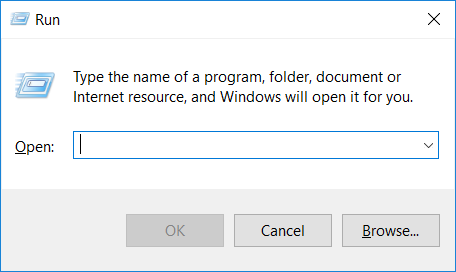
2. In the textbox, type “appwiz.cpl”, then press“ Enter ”.
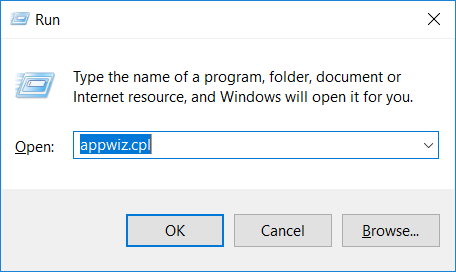
3. The “Programs and features” menu should now appear. It’s a list of all the programs installed on the PC. Here you can find the program, select it, and press “Uninstall“.
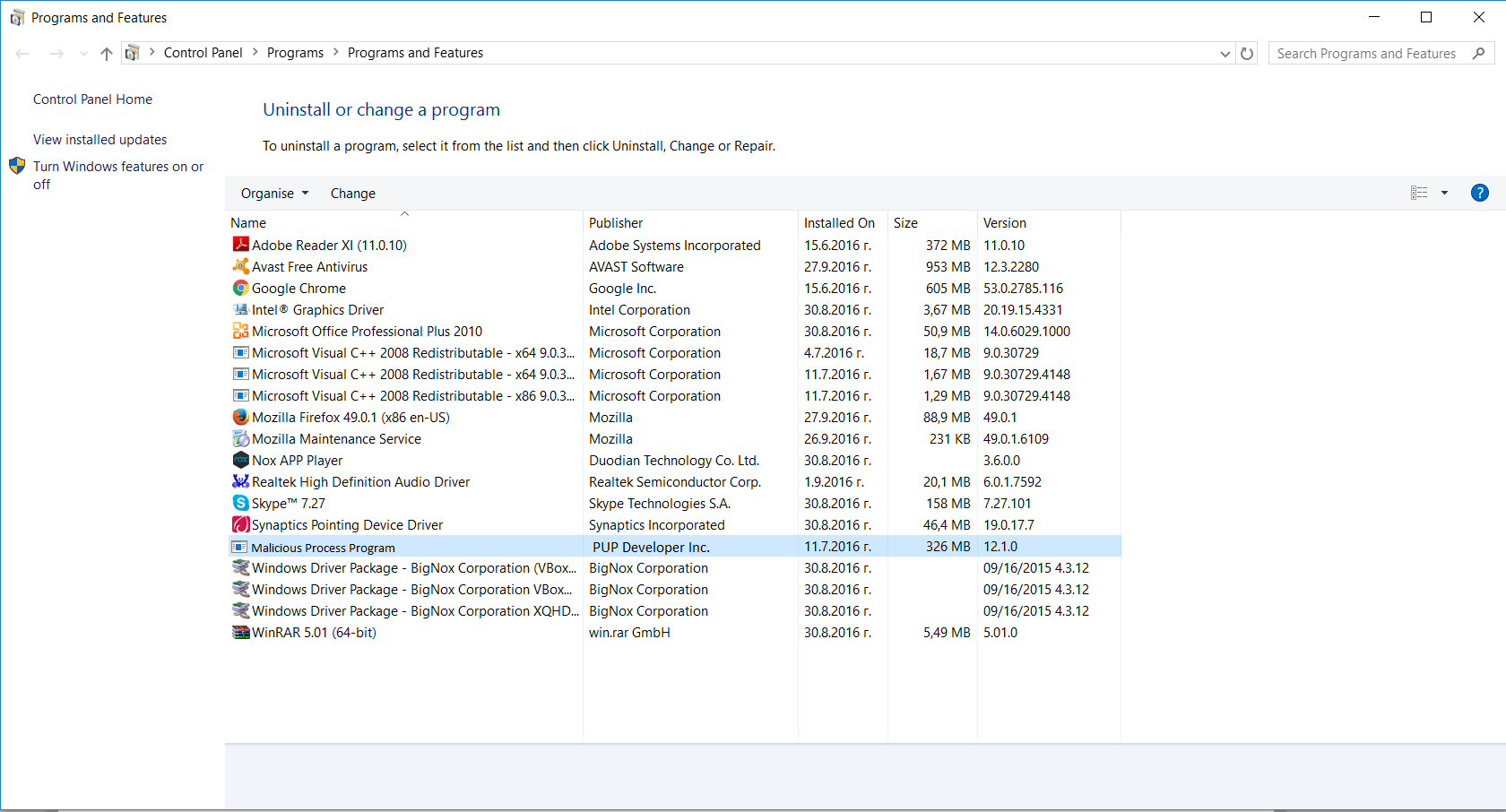
Remove .Asasin virus Virus From Your Browser
Before resetting your browser’s settings, you should know that this action will wipe out all your recorded usernames, passwords, and other types of data. Make sure to save them in some way.
-
1. Start Mozilla Firefox. In the upper right corner, click on the Open menu icon and select “Add-ons“.
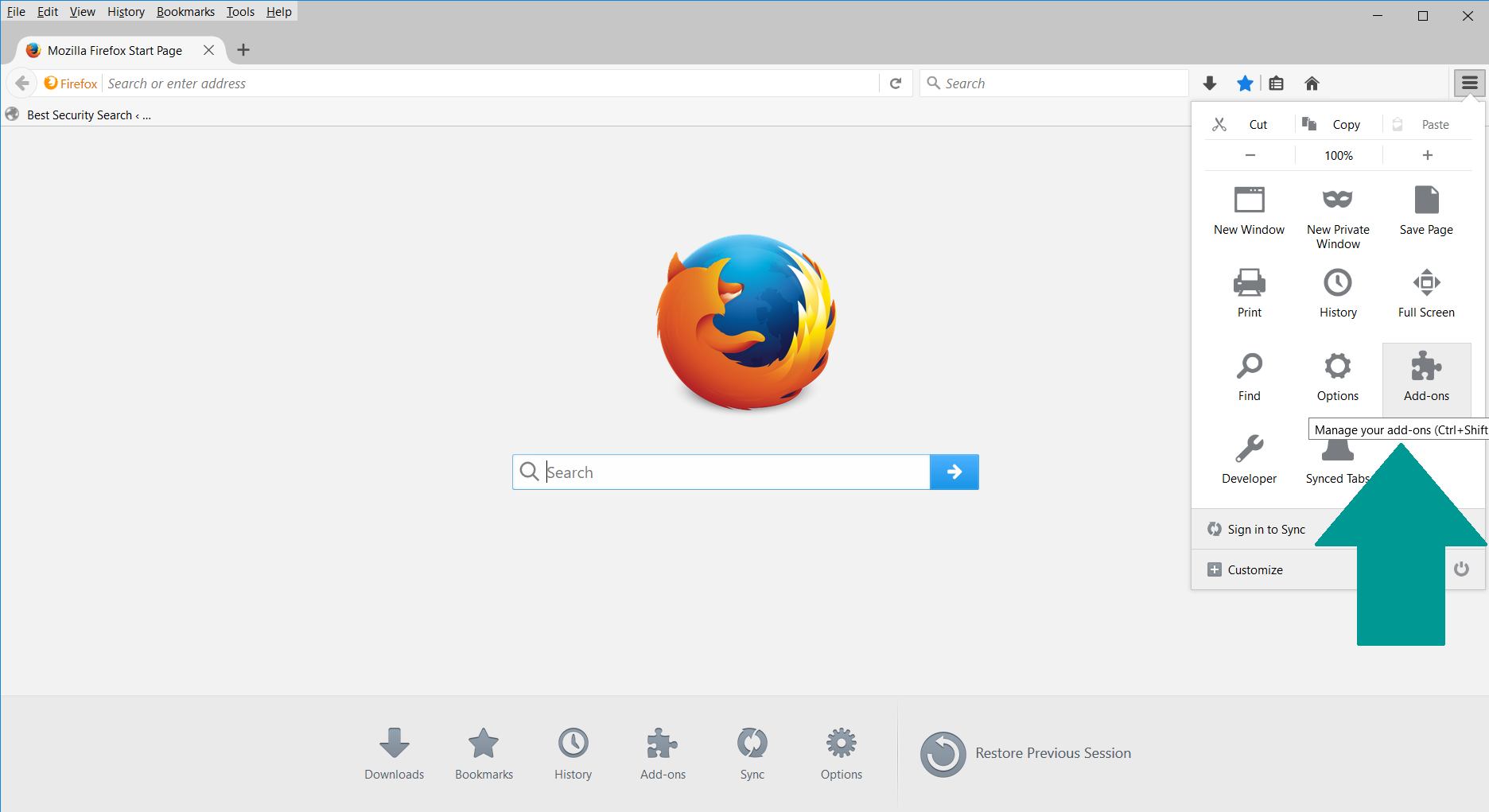
2. Inside the Add-ons Manager select “Extensions“. Search the list of extensions for suspicious entries. If you find any, select them and click “Remove“.
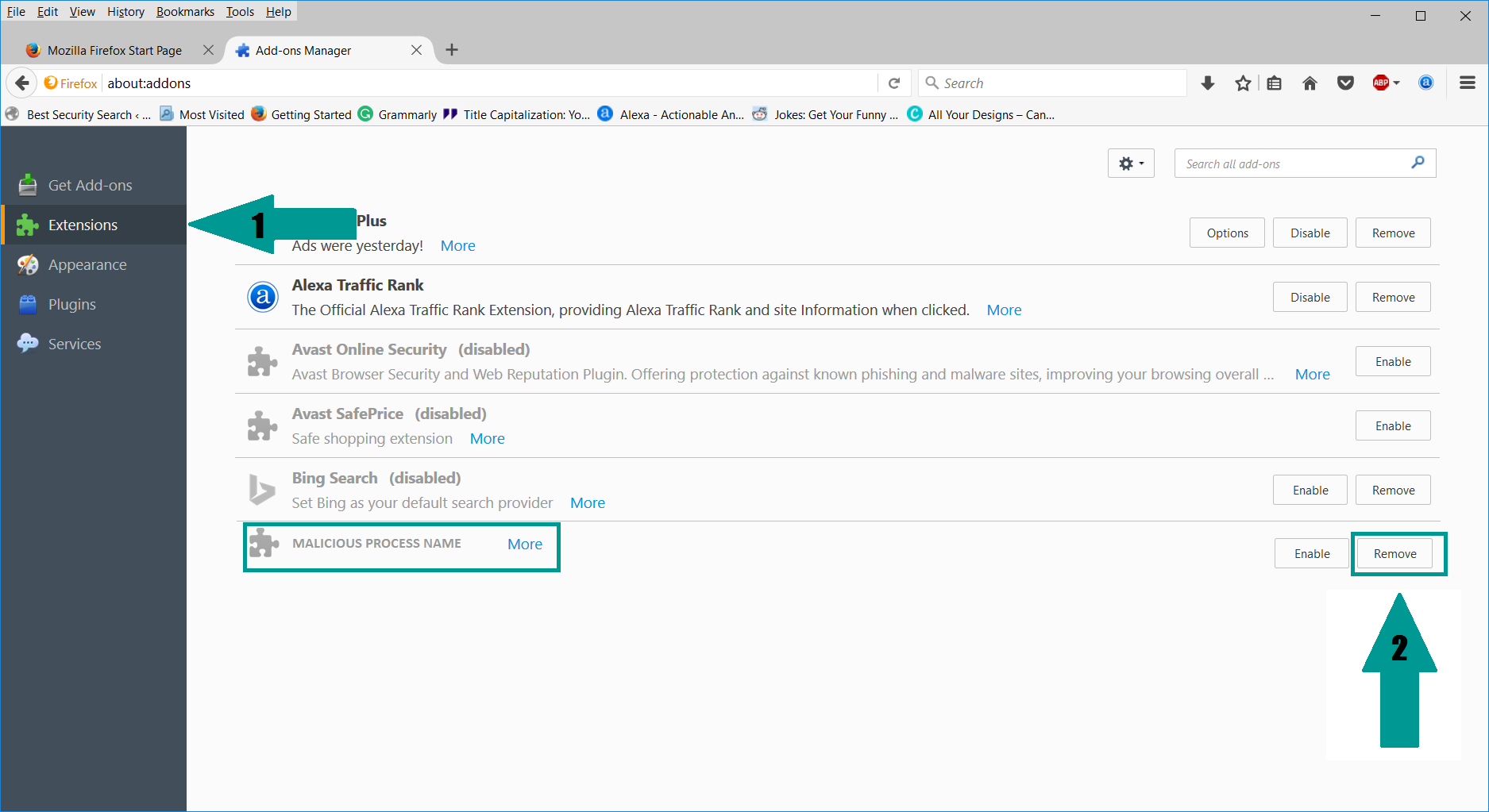
3. Click again on the Open menu icon, then click “Options“.
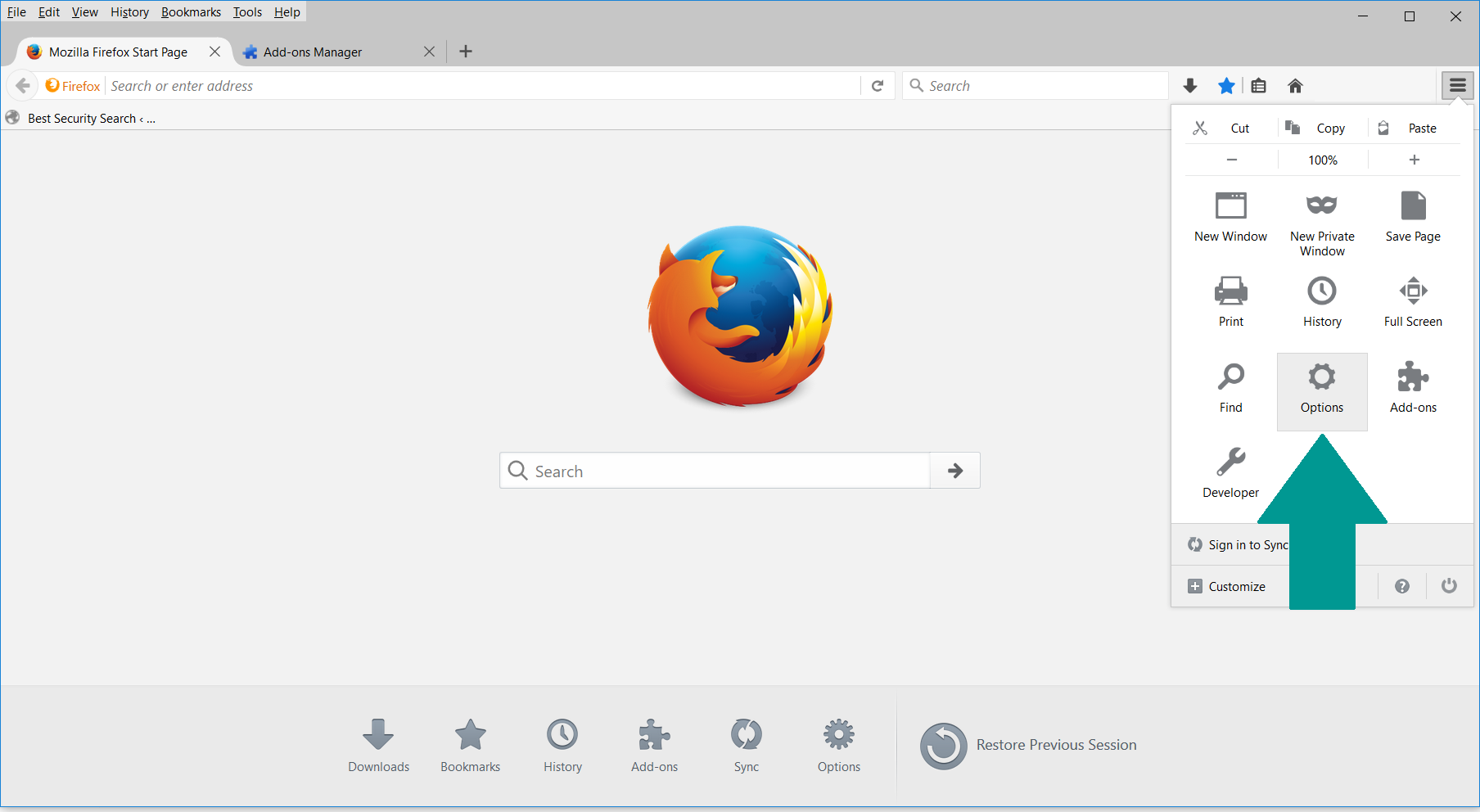
4. In the Options window, under “General” tab, click “Restore to Default“.
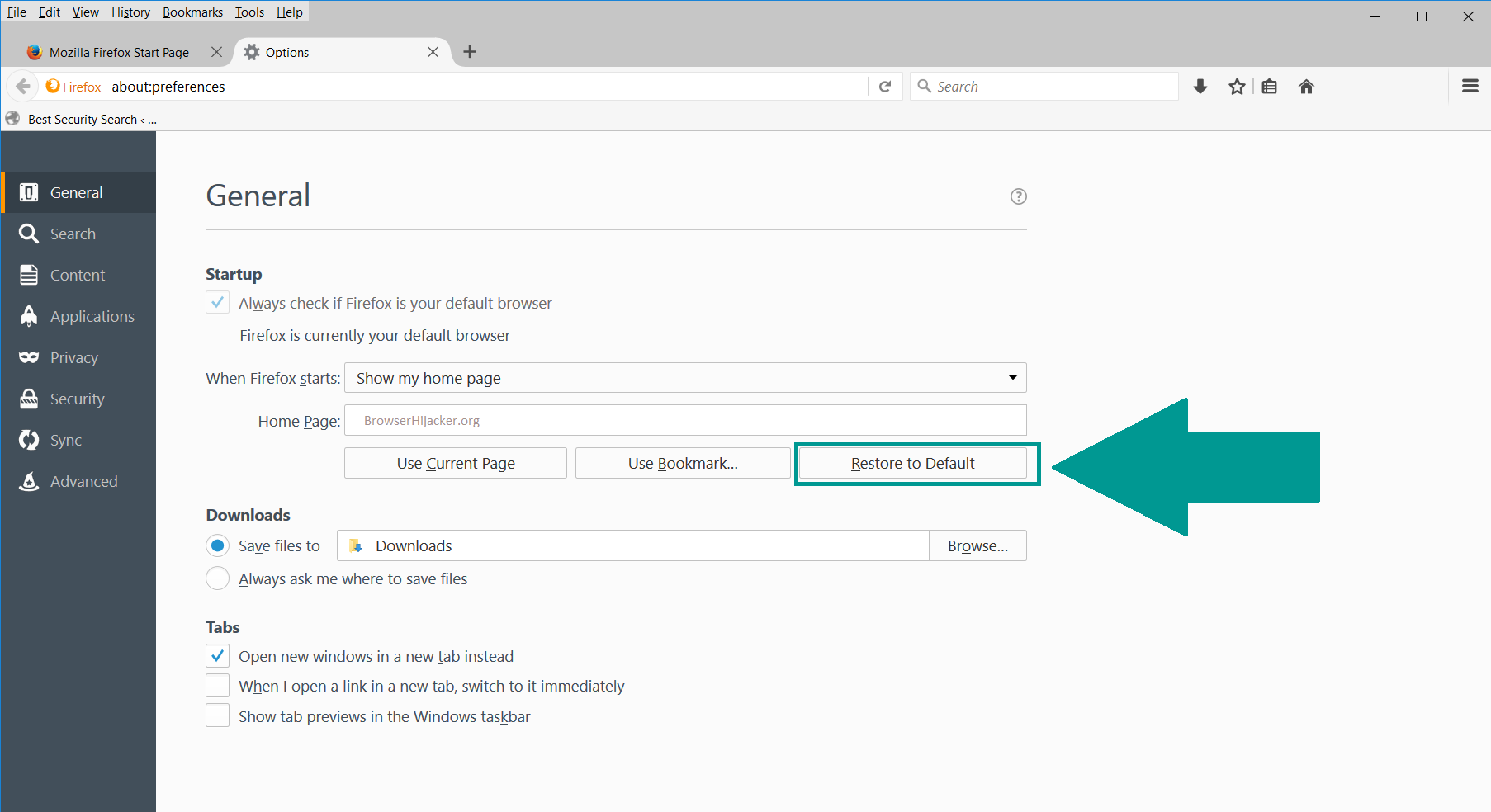
5. Select “Search” in the left menu, mark the unknown search engine and press “Remove”.

-
1. Start Google Chrome. On the upper-right corner, there a “Customize and Control” menu icon. Click on it, then click on “Settings“.
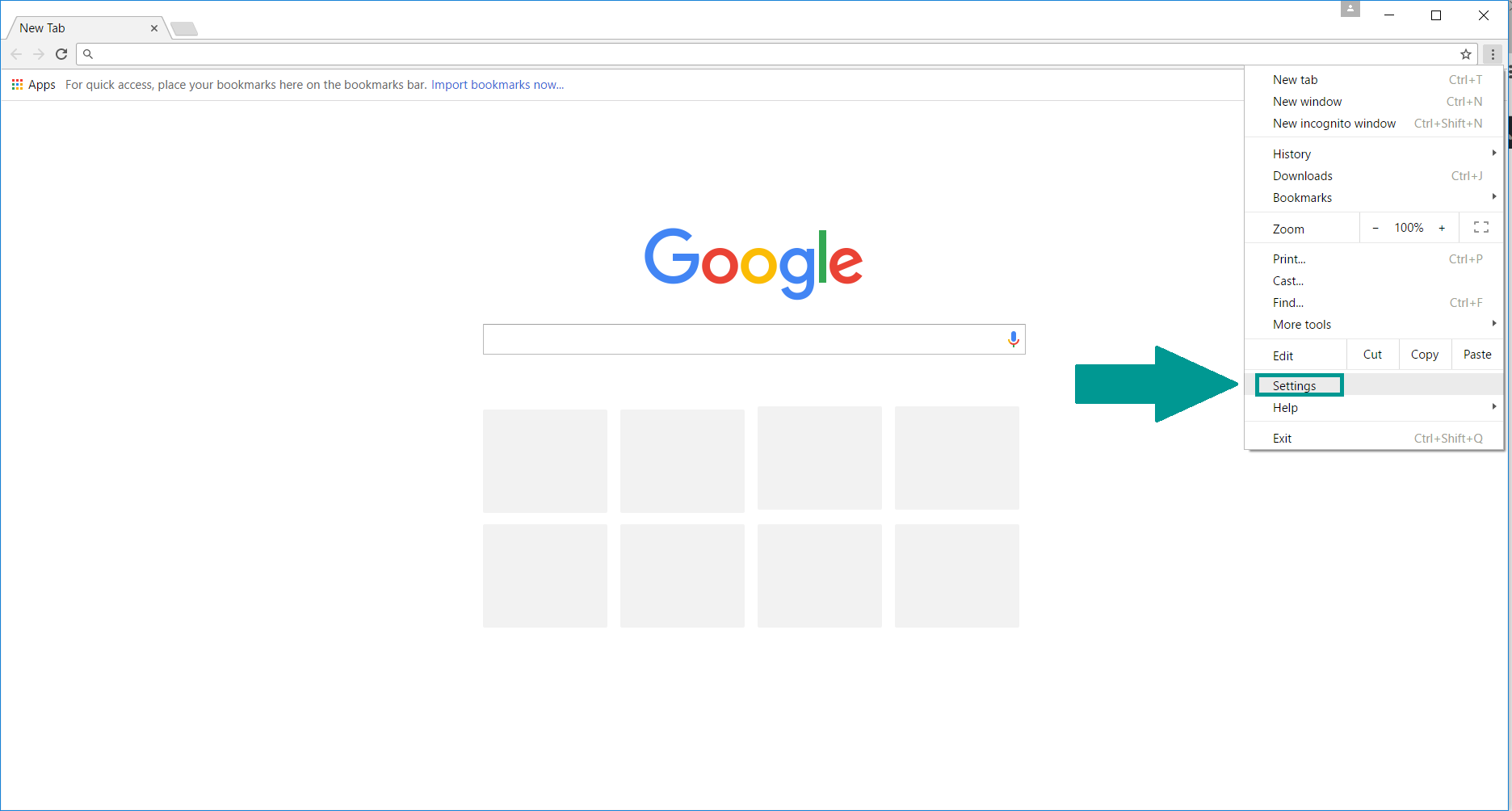
2. Click “Extensions” in the left menu. Then click on the trash bin icon to remove the suspicious extension.
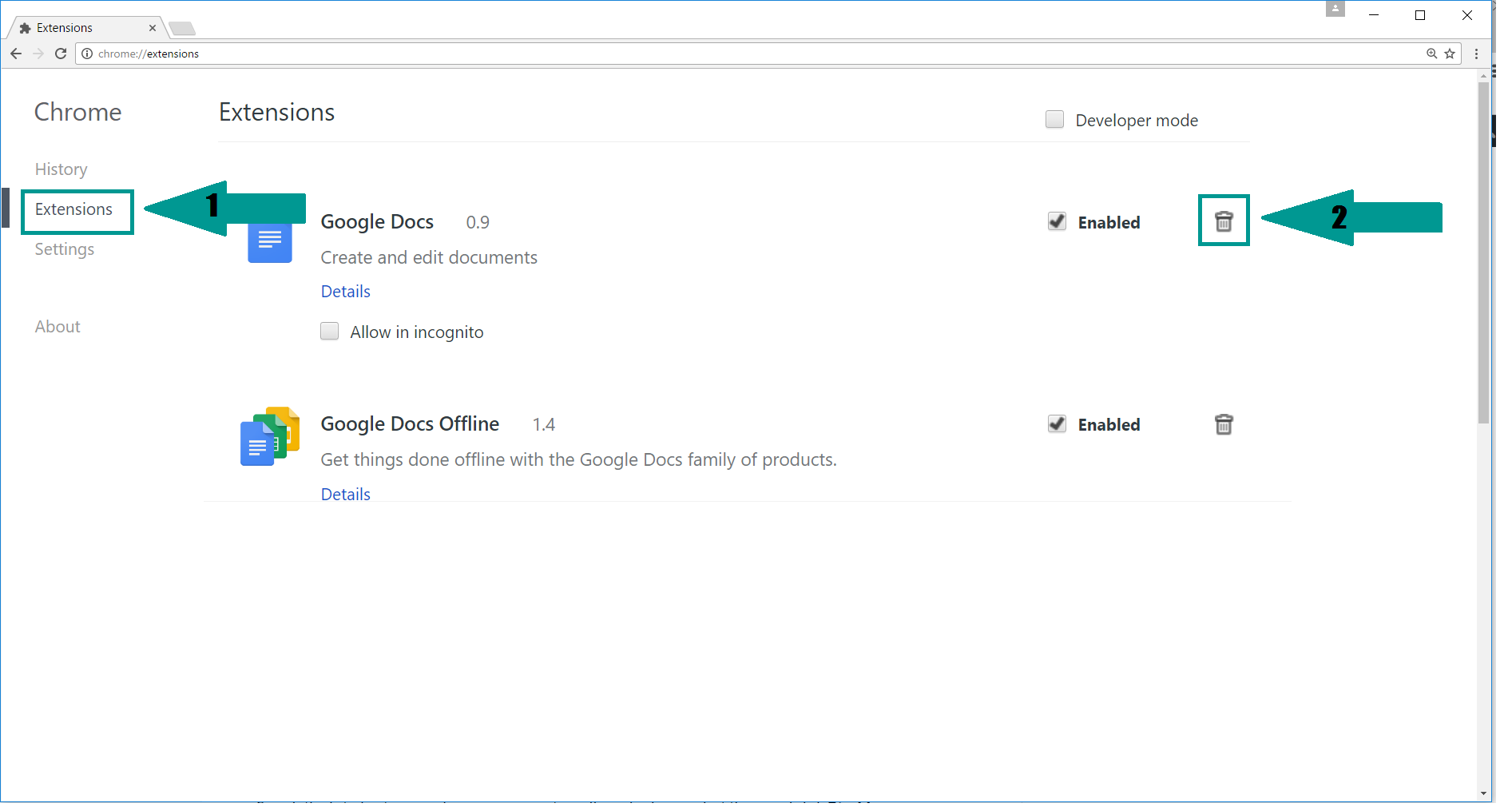
3. Again in the left menu, under Chrome, Click on “Settings“. Go under “On Startup” and set a new page.
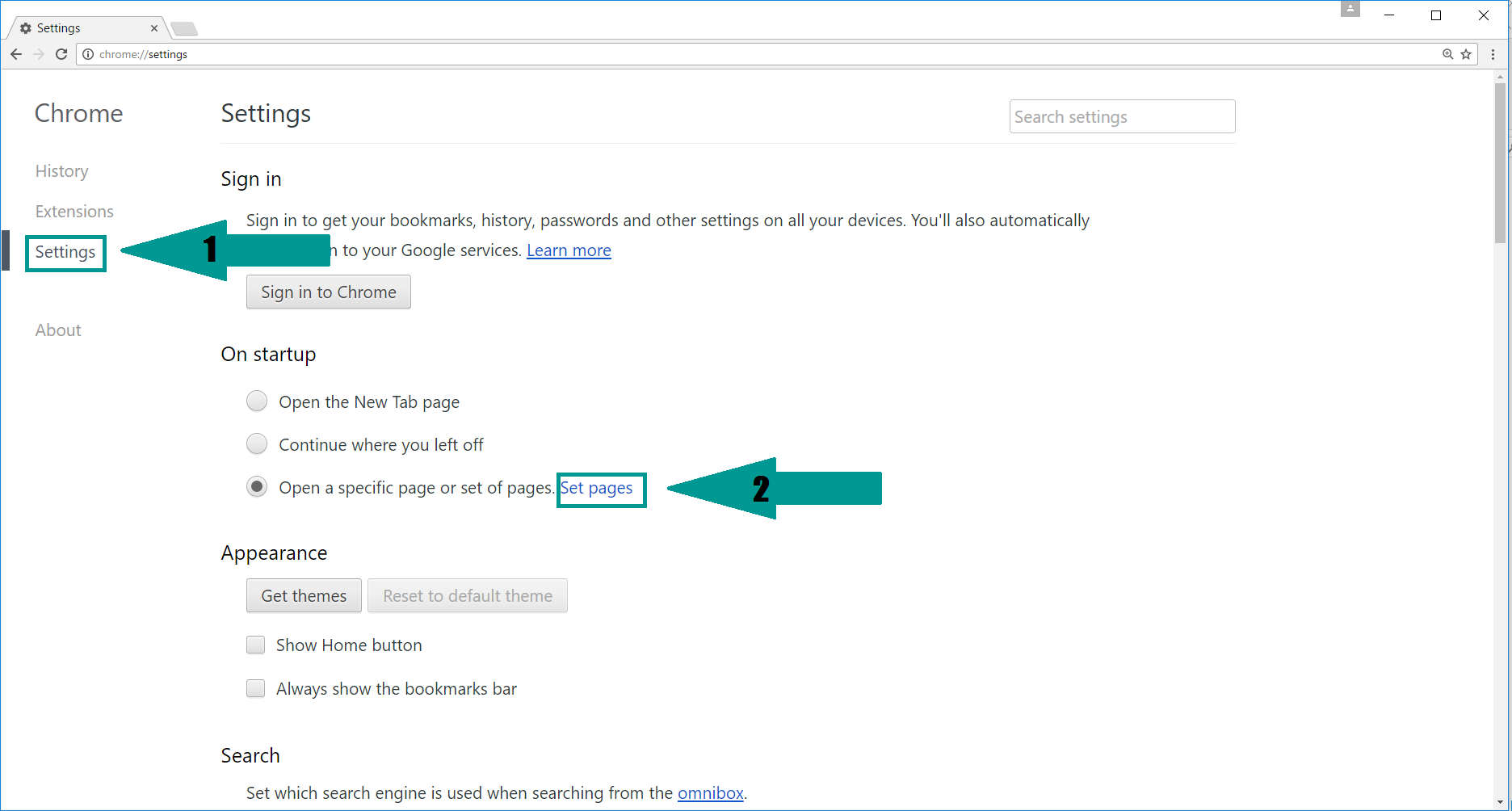
4. Afterward, scroll down to “Search“, click on “Manage search engines“.
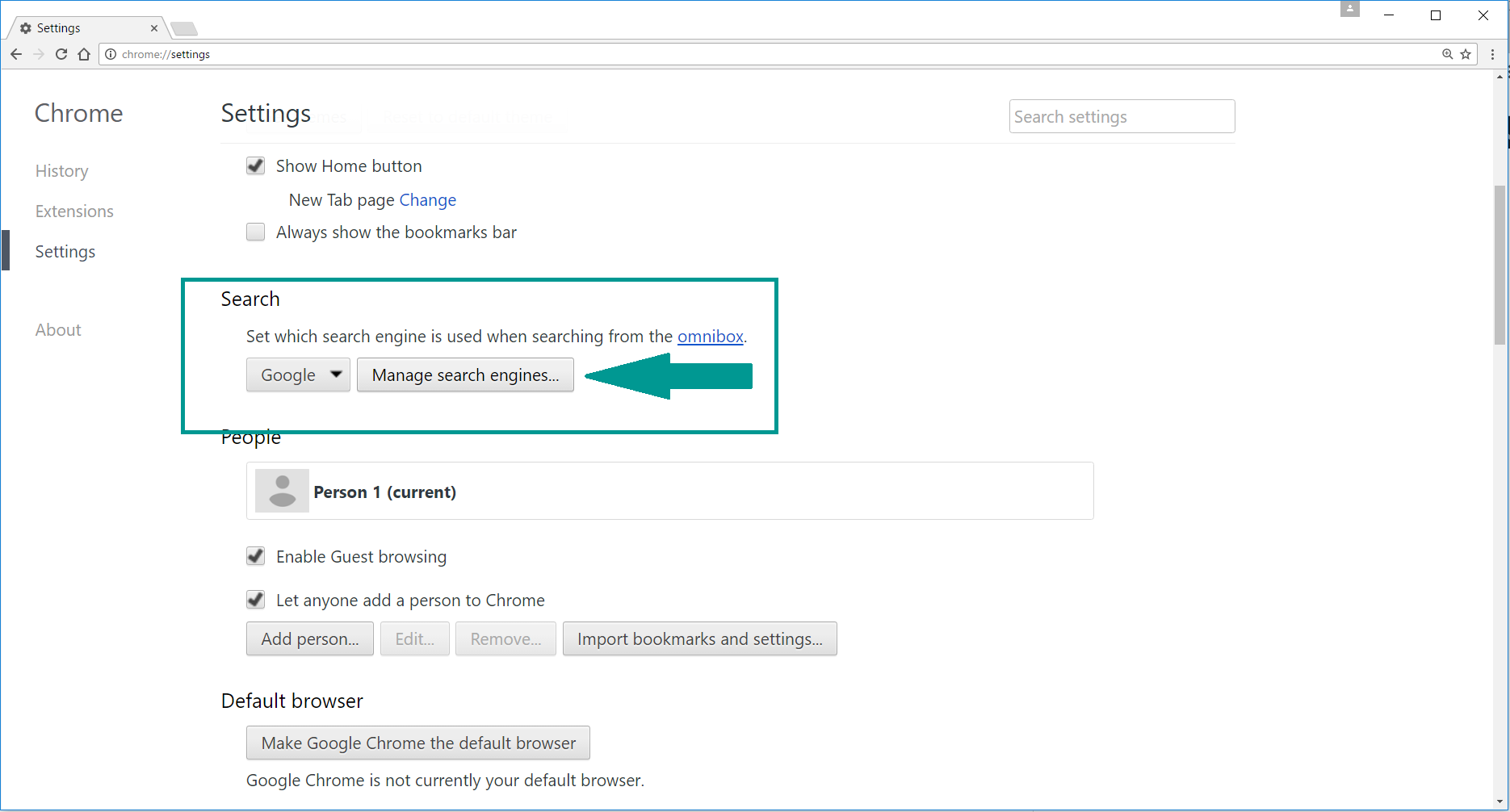
5. In the default search settings list, find the unknown search engine and click on “X“. Then select your search engine of choice and click “Make default“. When you are ready click “Done” button in the right bottom corner.
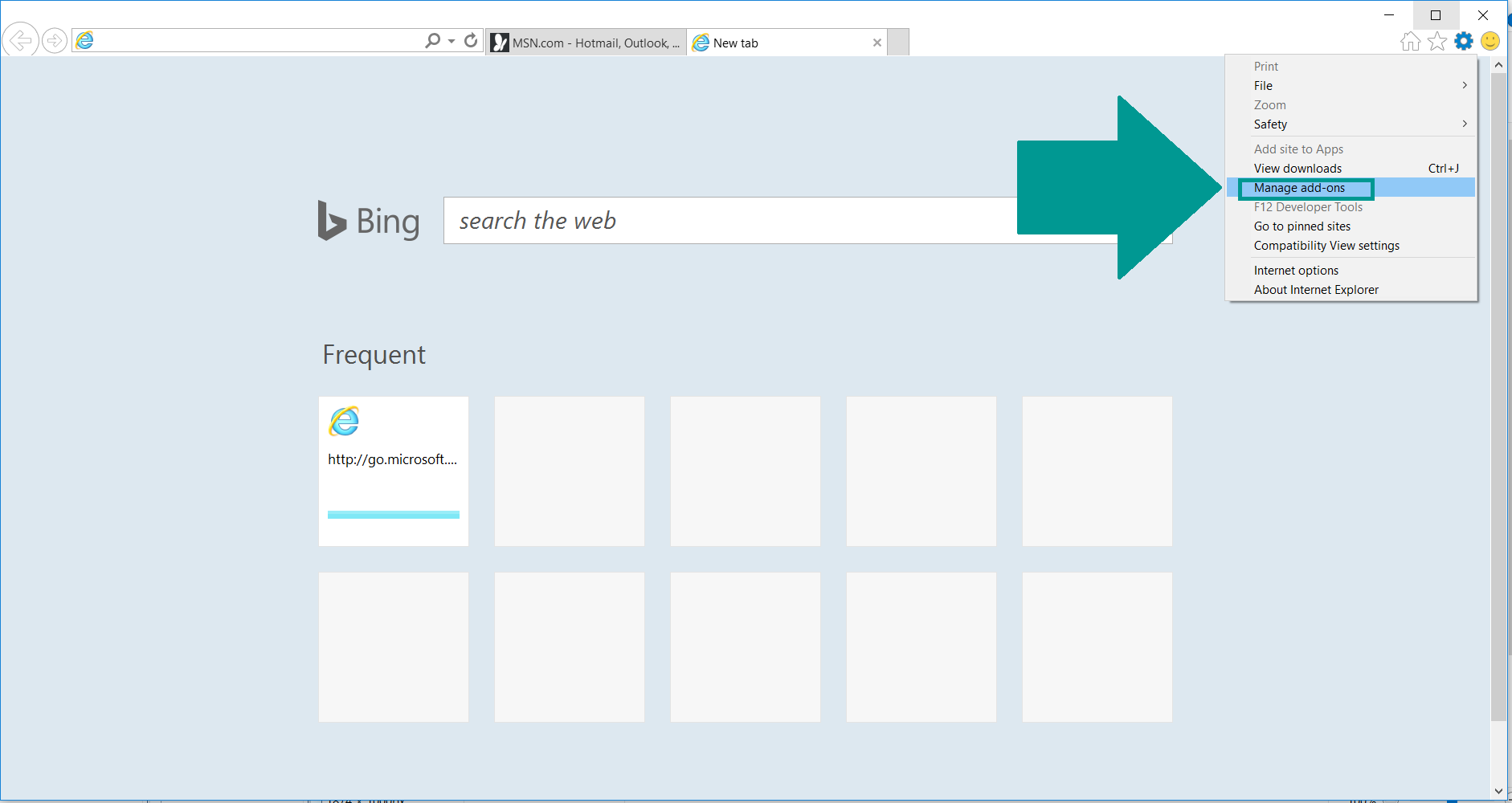
2. In the “Manage add-ons” window, bellow “Add-on Types“, select “Toolbars and Extensions“. If you see a suspicious toolbar, select it and click “Remove“.
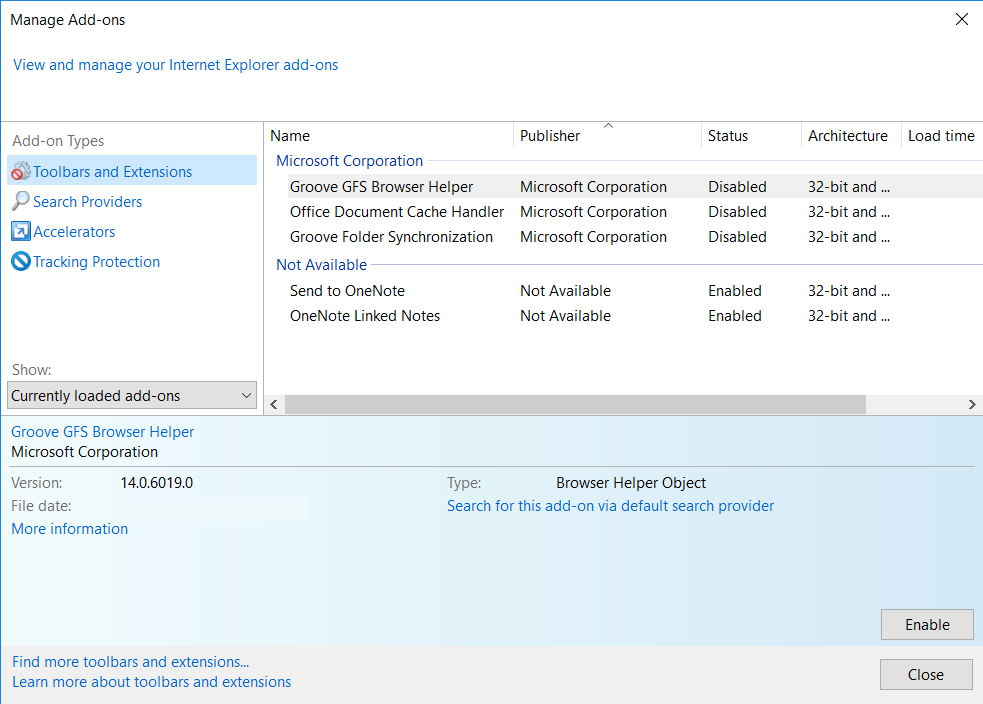
3. Then again in the “Manage Add-ons” window, in “Add-on Types“, Select “Search Providers“. Chose a search engine and click “Set as default“. Select the unknown search engine and click “Remove and Close”.
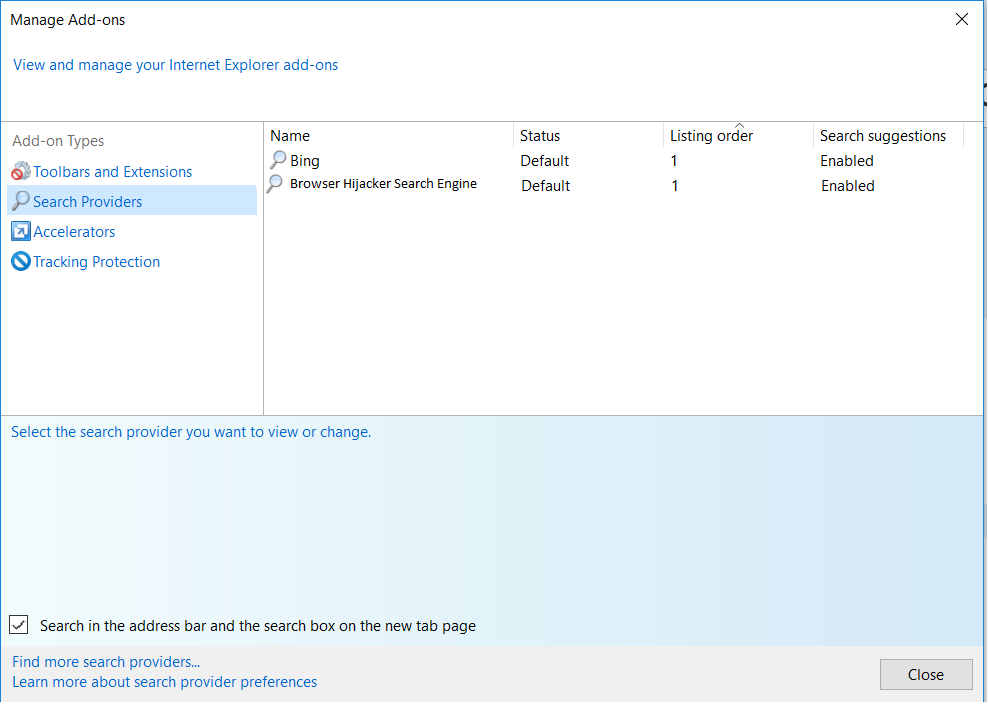
4. Open the Tools menu, select “Internet Options”.
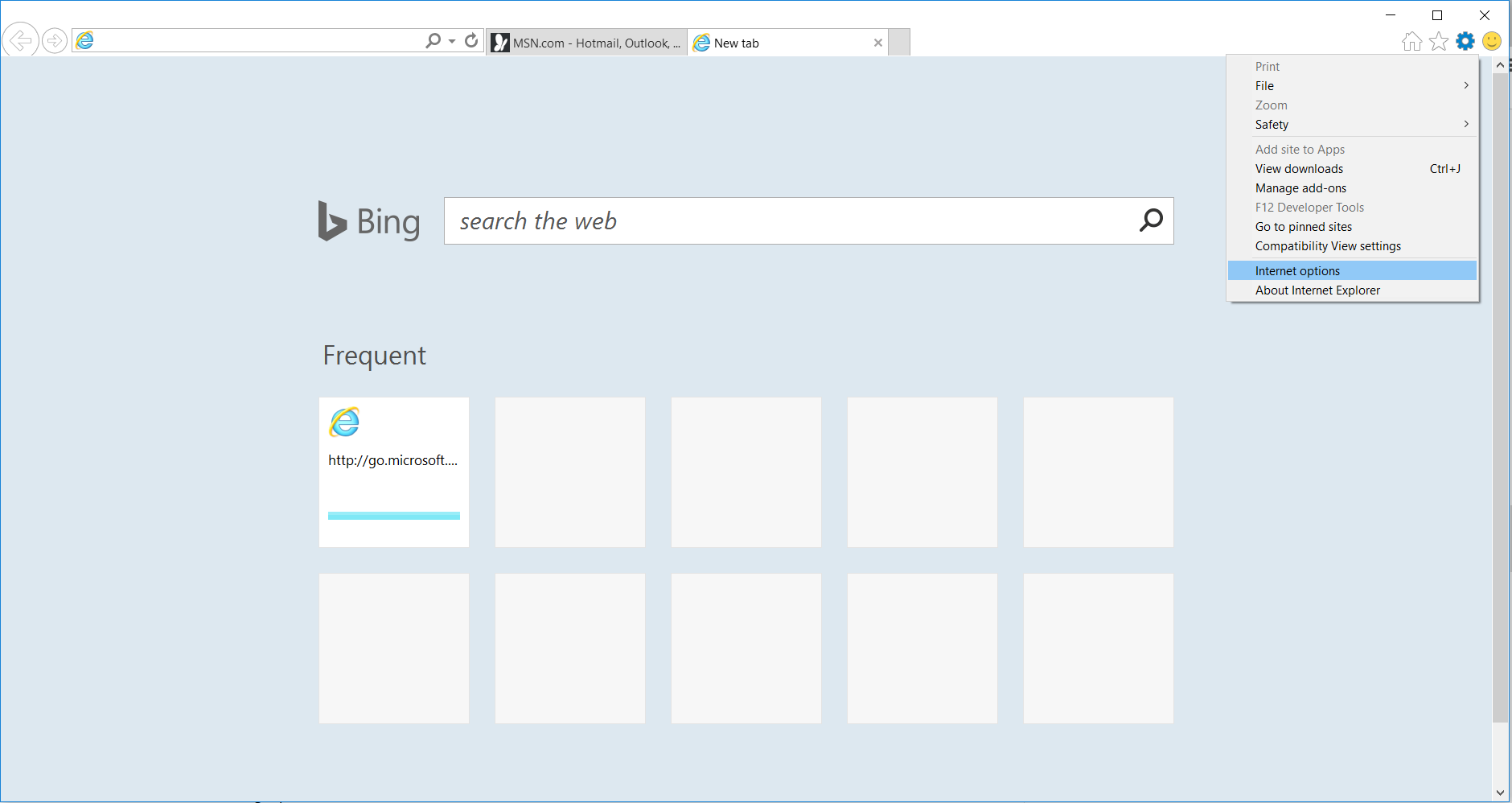
5. In the “General” tab, in “Home page”, enter your preferred page. Click “Apply” and “OK”.
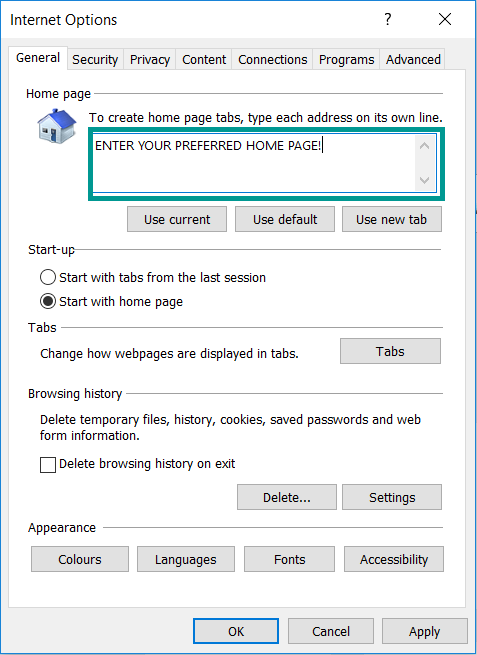
Repair Windows Registry
1. Again type simultaneously the WIN Key + R key combination
2. In the box, write regedit and hit Enter
3. Type the CTRL+ F and then write the malicious name in the search type field to locate the malicious executable
4. In case you have discovered registry keys and values related to the name, you should delete them, but be careful not to delete legitimate keys
Click for more information about Windows Registry and further repair help



